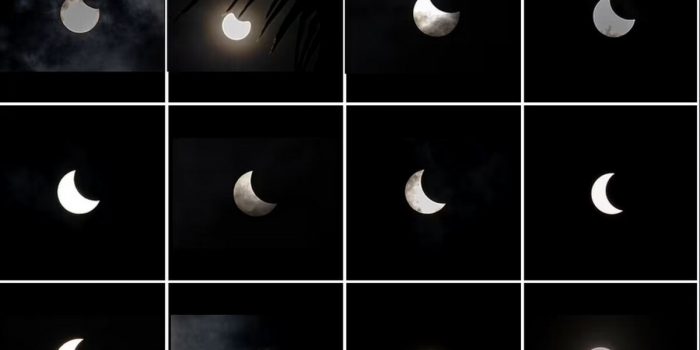Last week, a rare “hybrid” solar eclipse occurred where the moon blocked out different proportions of the sun in different parts of the world. This astronomical event only occurs once every decade. Western Australia (WA) was one of the regions that experienced a “total” solar eclipse. This was one of the few places where the face of the sun was completely blocked by the moon.
The “moment of totality” occurred at 04:27 BST (11:27 AWST) and was captured from Exmouth, WA, and streamed live by Perth Observatory. In other parts of the southern hemisphere, an “annular” solar eclipse was visible, where the moon appeared slightly smaller than the sun and left a ring of light around its silhouette.

Over 30,000 people turned in to watch the live stream put on by NASA, which saw the moon slowly covering more and more of the sun until it reached an 80-second total eclipse. In Exmouth, hobby and expert astronomers gathered to catch a glimpse, with local stargazers wearing special glasses and pointing modified binoculars to the sky.

The West Australian government poured millions of dollars into the small town to prepare for its 80 seconds of fame and a brief population increase of about 12,000. This event saw residents of the town, population 2,800, to list their homes on Airbnb for up to $17,000 AUD to make the most of the stargazing tourists.

Amazingly, the temperature in the town dropped by 9°F (5°C) when the eclipse reached totality, as the moon appeared and cast its shadow over a 25-mile-wide (40 km) area. The first total eclipse appeared over the Indian Ocean at sunrise and then moved across the southern hemisphere for the last one to appear over the Pacific at sunset.

As the moon moved throughout the day, different regions were able to witness different phases of the eclipse; either total, annular, or ‘partial’. The latter is where only part of the sun is blocked by the moon at the eclipse’s peak, so it appears to have a ‘bite’ taken out of it.
Hybrid eclipses occur when Earth is in the ‘sweet spot’ so the moon and the sun are almost the exact same size in the sky. According to NASA solar expert Dr. Michael Kirk, this phenomenon is relatively rare.

British astronaut Tim Peake traveled to Australia to observe the eclipse for himself. He was thoroughly amazed and afterward tweeted that it was, “One of the most surreal events [he has] experienced”.
Dr. Lucie Green, who is currently a physics professor at University College London (UCL), also flew halfway around the world to observe this amazing moment with a telescope from Aberystwyth University in Wales.

A hybrid solar eclipse is a combination of a total and annular eclipse, which is headed by a partial solar eclipse. It will only be visible from certain regions which generally include Australia, East Timor, Indonesia, the southern Indian Ocean, and the western Pacific Ocean.
During an eclipse, different parts of the world are in different parts of the shadow that is cast over the Earth, with the center point and track across the planet known as the path of totality.
Those standing in the path of totality will experience a total solar eclipse. And those who are standing in the moon’s shadow but not in the path of totality will experience a partial eclipse.

This is also pertinent to mention with equal emphasis that the next total solar eclipse visible from the UK will not occur until September 23, 2090, while the next US solar eclipse will take place on April 8, 2024.
In addition to the hybrid solar eclipse, astronomers can also witness the annual Lyrid meteor shower, which is expected to be in its fullest at around 02:06 BST on Sunday morning with up to 18 shooting stars visible per hour. Meteor showers occur when meteoroids enter Earth’s atmosphere and burn up, causing streaks of light.


